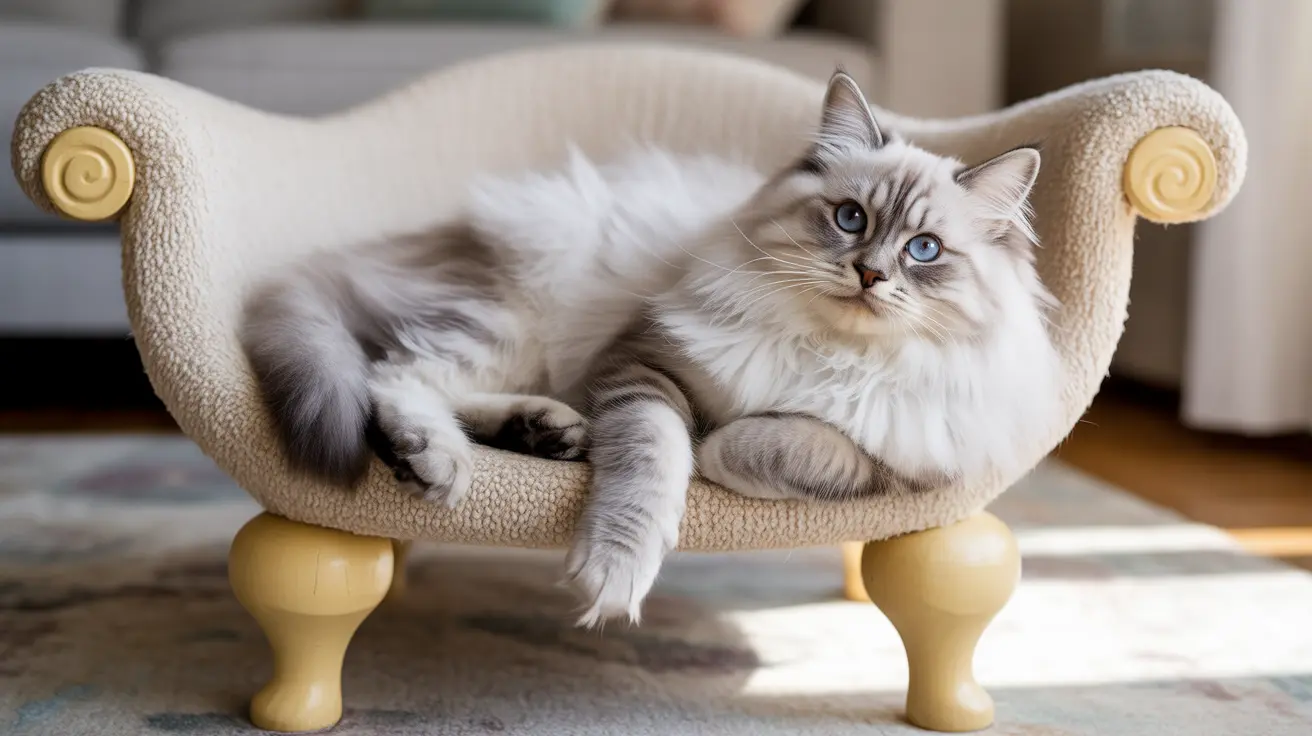Creating a custom cat couch is a rewarding project that combines your love for crafting with your pet's need for comfort. Whether you're an experienced DIYer or just starting out, this comprehensive guide will walk you through everything you need to know about building the perfect lounging spot for your feline friend.
From selecting durable materials to following step-by-step construction methods, we'll explore various approaches to creating a cozy cat couch that both you and your pet will love. Let's dive into the essential elements of this popular pet furniture project.
Choosing the Right Materials for Your Cat Couch
The success of your DIY cat couch largely depends on selecting appropriate materials. For upholstered versions, opt for sturdy fabrics like microfiber, microsuede, or dense weaves that resist cat claws. High-density foam (typically 1-inch thick) provides the perfect balance of comfort and support for your feline friend.
For the structure, consider these essential materials:
- Plywood or sturdy cardboard for the base
- High-density foam for cushioning
- Durable upholstery fabric
- Steel corner braces and hardware
- Decorative legs (optional)
- Pet-safe adhesive
Step-by-Step Construction Guide
Planning Your Design
Before starting construction, measure your cat's preferred sleeping position to determine the ideal dimensions. A typical cat couch includes:
- Backrest: 10.5" x 20"
- Armrests: 7" x 11" each
- Seat: 11" x 14"
Building the Base
Start by cutting your base material to size and securing the structural elements. If using wood, ensure all edges are smooth and corners are properly reinforced with steel braces. For cardboard versions, reinforce corners and edges with additional layers for stability.
Adding Comfort Layers
Layer your high-density foam, cutting pieces precisely to fit each section. Use temporary adhesive spray to secure foam pieces in place. Pay special attention to corners and edges where pieces meet to ensure a professional finish.
Creative Design Options
Modern cat couches come in various styles to match your home décor. Popular options include:
- Classic miniature sofa designs
- Mid-century modern interpretations
- Chesterfield-style with tufted details
- Modular sectionals for multiple cats
Maintenance and Care Tips
To ensure your cat couch remains attractive and functional:
- Vacuum regularly to remove pet hair
- Spot clean stains immediately
- Check and tighten hardware monthly
- Consider adding a washable cover for easy cleaning
Frequently Asked Questions
What materials are best for making a durable and cat-friendly couch?
The most durable materials include microfiber or microsuede fabric, high-density foam for cushioning, and sturdy plywood or reinforced cardboard for the base structure. These materials resist wear while providing comfort.
How do I build a DIY cat couch using wood, foam, and fabric?
Start with a plywood base, add cut-to-size foam pieces for the seat, back, and arms, then cover with fabric using a staple gun. Secure all components with pet-safe adhesive and appropriate hardware.
Can I make a comfortable crocheted or knitted cat couch, and what materials do I need?
Yes, you'll need worsted weight yarn (about 24 oz), a foam base (21" x 78"), fiberfill for stuffing, and crochet hooks (4mm and 5.5mm). Follow a pattern that includes both structural and decorative elements.
What design features make a cat couch safe and appealing for my feline?
Include stable construction, rounded corners, secure hardware, and a comfortable height. Adding familiar scents or catnip can make the couch more appealing to your cat.
How can I maintain and clean a cat couch to keep it looking good and safe for my pet?
Regular vacuuming, prompt stain treatment, and periodic hardware checks are essential. Consider using removable, washable covers for easy cleaning and maintenance.
By following these guidelines and tips, you can create a beautiful, durable cat couch that provides your feline friend with the perfect spot for lounging and napping. Remember to prioritize both safety and comfort in your design choices, and don't be afraid to customize the project to suit your cat's specific needs and preferences.






